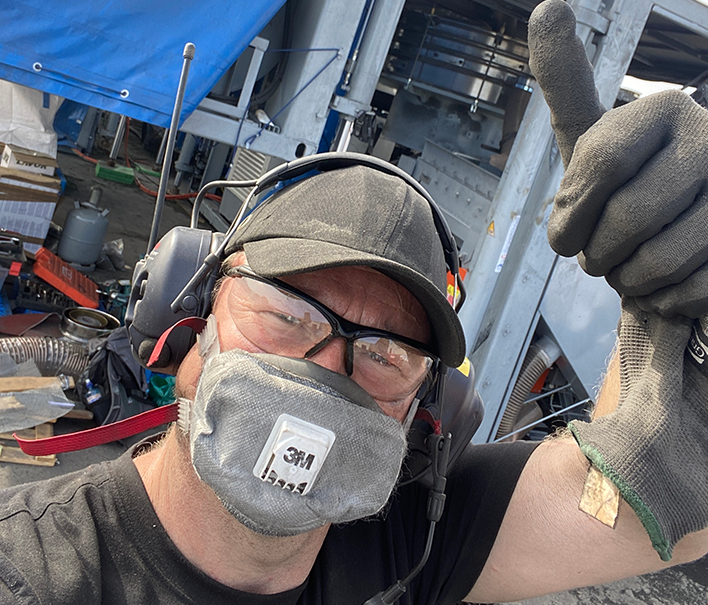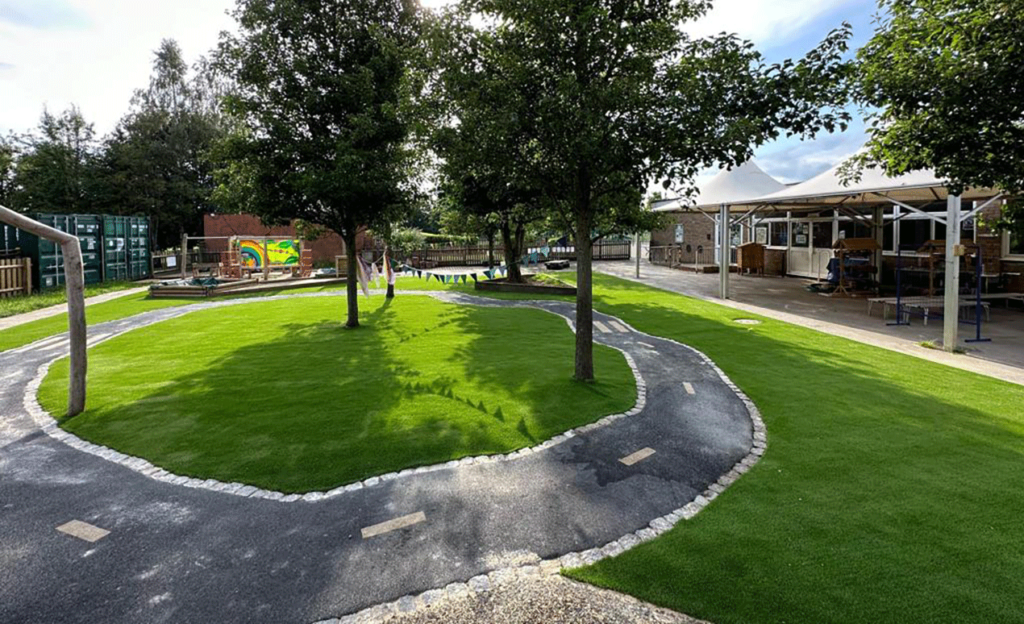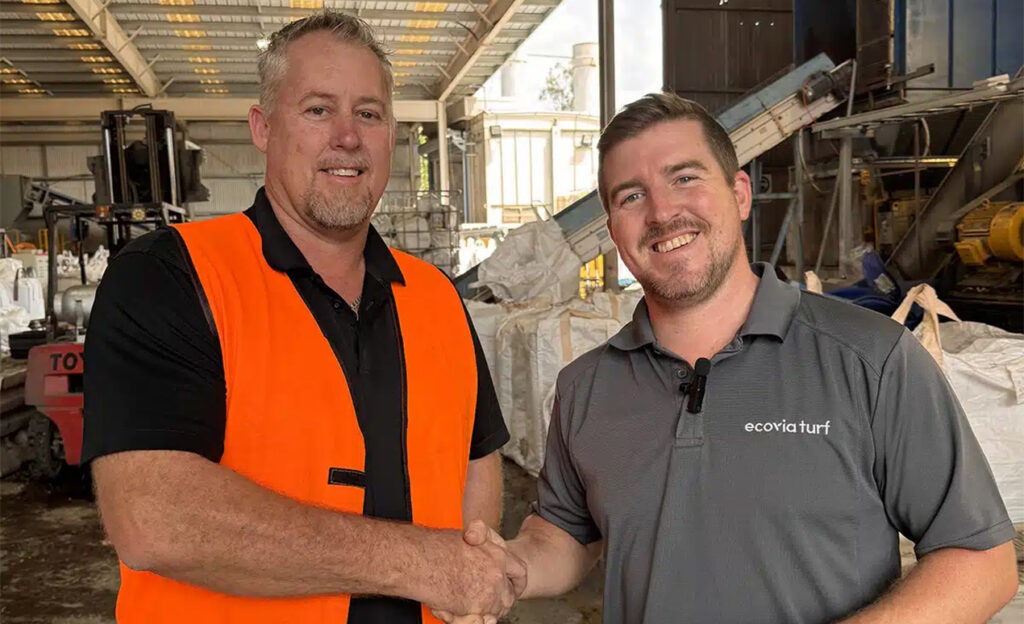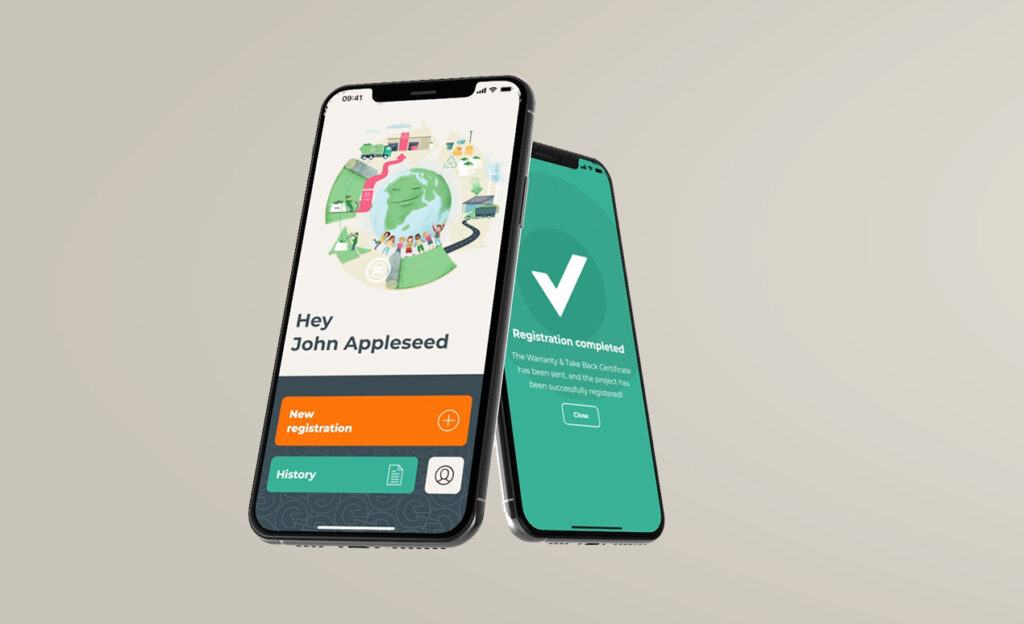Lars Solberg, our changemaker in Norway, is not only dedicated to installing and maintaining artificial turf fields with TeBe Sports but also leads the recycling efforts for old sports fields through his other company, All Sports Recycled. In this piece, he shares his insights on the challenges and future of artificial turf recycling.
Artificial Turf: A Growing Challenge
Artificial turf is a popular alternative to natural grass in sports fields and public and private green spaces, thanks to its durability and low maintenance requirements. However, the challenges associated with recycling and material recovery of artificial turf have emerged as significant environmental concerns. These challenges are multifaceted, involving issues with material composition, lifespan, and end-of-life disposal.
Current Recycling Challenges
Today, the artificial turf we receive and recycle are sports fields and typically consists of synthetic materials such as polyethylene, polypropylene, polyurethane, latex, or nylon, along with sand, rubber, or plastic granules (often from recycled tires) as infill to provide stability and support. This complex composition complicates recycling efforts, requiring sophisticated processes to separate the materials for reuse and recycling.
Creating Efficient Recycling Processes
As recyclers, our challenge is to create monostreams of the material from artificial turf, which is essential for efficient recycling. It allows for the recovery of high-quality materials, reduces contamination, and simplifies the recycling process, ultimately supporting our sustainability goals of reducing waste, conserving resources, and minimizing the environmental impact of artificial turf.
The Complexity of Multimaterials
The mix of synthetic materials in today’s artificial turf generations complicates the recycling process, making it both tedious and energy-intensive. At our recycling facility, we are tasked with separating these materials from sportsfields, a process that currently involves removing the Polyethylene (PE) fibers from the backing. This separation allows the PE fibers to embark on a circular lifecycle, being transformed into new plastic products, while the backing, which lacks value in a circular economy, is primarily incinerated.
Vision for the Future: Monomaterial Turf
In our opinion, the future of artificial turf lies in turf products made from a single material, already a monostream. This would drastically simplify the recycling process to straightforward grinding and washing, with a valuable product as output. The ONE-DNA™ product stands as a prime example of this future direction, and we eagerly welcome it into the market and our recycling processes. Its introduction is a significant step towards streamlining recycling efforts and enhancing the sustainability of artificial turf.
Conclusion:
By focusing on single-material artificial turf like ONE-DNA™, we can ensure that the end-of-life phase of these products is as environmentally friendly as their use phase. This approach not only aligns with our sustainability goals but also sets a new standard for the industry.
































